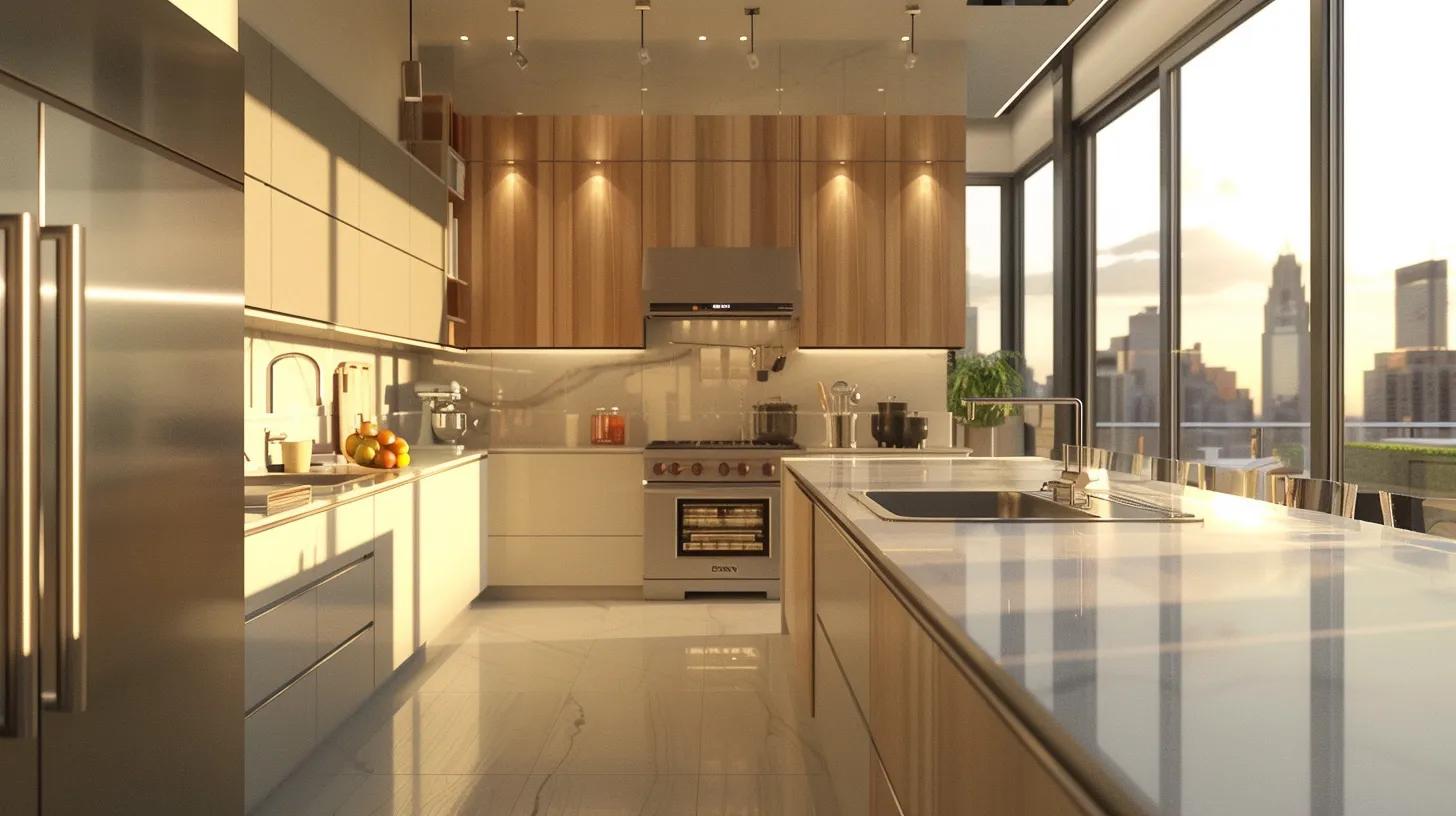As more homeowners in Smyrna look to reduce their environmental impact, eco-friendly kitchen remodeling is becoming a top priority for 2025 renovations. Sustainable upgrades not only benefit the planet—they also create healthier, more energy-efficient spaces that can lower utility bills and boost property value. From energy-saving appliances and reclaimed materials to low-VOC finishes and water-efficient fixtures, today’s green kitchen designs blend style with smart functionality. If you’re planning a remodel, now is the perfect time to embrace eco-conscious choices that support both your lifestyle and the environment. Let’s explore the sustainable trends transforming Smyrna kitchens this year.
Go Green: Eco-Friendly Kitchen Remodeling Ideas for Smyrna Homes
What Is Eco-Friendly Kitchen Remodeling and Why Is It Important in Smyrna?

Eco-friendly kitchen remodeling focuses on updating kitchens with sustainable materials and energy-efficient systems. This approach reduces environmental impact while creating a healthier living space. Instead of traditional building methods that often rely on resource-heavy materials and high energy use, eco-friendly remodels emphasize smart design choices that support both functionality and environmental responsibility.
In Smyrna, where hot summers and rising utility bills are common, many homeowners are looking for ways to lower energy usage without sacrificing comfort or style. A sustainable kitchen remodel helps address this by improving efficiency through updated lighting, appliances, and ventilation systems. For example, energy-efficient appliances consume less power and water, which can translate to long-term cost savings. Many of these systems are designed to meet or exceed national energy standards and reduce strain on local resources.
Another key part of green remodeling is the use of low-emission materials. Low-VOC (volatile organic compound) paints and sealants limit the release of harmful chemicals into the air, which improves indoor air quality. This is especially important in kitchens, where high heat and steam can accelerate the release of pollutants from finishes and adhesives. Reducing these emissions helps create a safer and more comfortable cooking environment.
Sustainable materials also play a big role in eco-friendly design. Homeowners are increasingly turning to recycled or repurposed materials such as glass, reclaimed wood, or recycled metal for countertops, backsplashes, and hardware. These options not only reduce demand for new raw materials but also give the kitchen a unique, lived-in character. Engineered wood alternatives are another smart choice. They offer the appearance and durability of natural hardwoods but come from more sustainable sources and are often produced with less waste.
Cabinetry is another area where sustainability matters. Instead of traditional hardwood cabinets that rely on slow-growing species, many remodelers now choose options made from certified sustainable wood or recycled content. Some manufacturers also use water-based finishes that are safer for both installers and homeowners.
Water conservation is another benefit of green kitchen remodeling. Installing low-flow faucets or updated plumbing systems can significantly reduce water usage over time. Improved ventilation systems also help manage indoor humidity more efficiently, which supports both air quality and energy efficiency.
How Does Sustainable Kitchen Remodeling Improve Health and Safety?
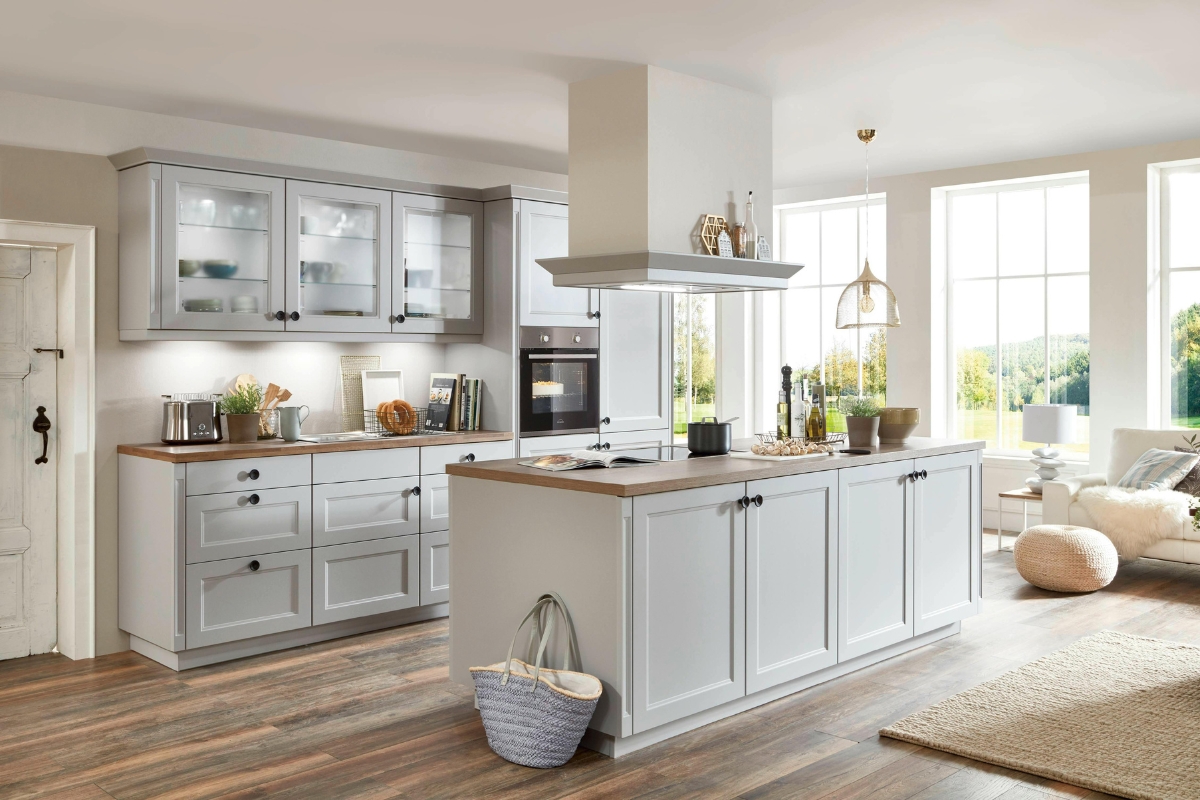
Sustainable kitchen remodeling focuses on using materials and systems that promote healthier indoor environments while minimizing environmental impact. In doing so, it also enhances safety for people who use the space every day. One of the most direct ways this is achieved is through the use of low-emission building products. Materials such as low-VOC paints, adhesives, and sealants help reduce indoor air pollution by limiting the release of volatile organic compounds, which are often linked to respiratory issues and allergic reactions.
The benefits go beyond just air quality. Proper ventilation is also an important part of any remodeling project, especially in kitchens where cooking creates heat, moisture, and airborne particles. A well-designed ventilation system helps remove excess humidity and pollutants, improving air circulation and reducing the chances of mold growth or lingering odors. By keeping the air cleaner, ventilation upgrades contribute to a more comfortable and safer cooking environment.
Lighting is another key area where sustainable design supports safety and wellbeing. Energy-efficient lighting options like LED bulbs not only use less electricity, but they also produce less heat, reducing the risk of burns or overheating. When paired with smart lighting features that respond to natural light or occupancy, these systems provide consistent, glare-free illumination that can reduce eye strain and prevent accidents. Good visibility is particularly important in areas where sharp tools and hot surfaces are frequently in use.
Flooring and layout choices also play a role in safety. Non-slip flooring materials reduce the risk of falls, and ergonomic design principles can help prevent strain or injury during daily use. For example, adjusting counter heights or organizing cabinetry to reduce unnecessary bending or reaching can make a big difference for older adults or those with limited mobility. These design elements also make the space more accessible to everyone in the household, improving usability without compromising style or function.
Cabinets and countertops that are sustainably sourced or made from recycled materials offer additional benefits. Engineered wood products or recycled surfaces are often treated with safer finishes and require less energy to produce. These choices contribute to a more sustainable remodeling process overall while still offering the durability and appearance homeowners expect. Even small decisions, such as choosing cabinet hardware free of heavy metals or using water-based sealants, contribute to a healthier kitchen space.
What Environmental Benefits Do Eco-Friendly Kitchens Offer?

Eco-friendly kitchens play a vital role in protecting our planet. By cutting down on energy use and conserving water, they help reduce the greenhouse gas emissions linked to climate change. Replacing old appliances with energy-efficient models can lower electricity consumption by nearly a third, which not only shrinks your carbon footprint but also brings down monthly utility bills. Incorporating LED lighting instead of traditional bulbs further reduces the demand on power grids and lasts far longer, meaning less waste over time.
Choosing renewable building materials is another key advantage of sustainable kitchen design. Bamboo and reclaimed wood require far less energy to harvest and process than stone or metal alternatives. These materials often come from fast-growing or recycled sources, so using them takes pressure off forests and mineral reserves. Countertops made from recycled glass or engineered composites turn post-consumer waste into functional surfaces, diverting millions of tons of material from landfills each year. When cabinets and flooring are crafted from responsibly sourced wood or recycled materials, the lifecycle impact of your renovation drops significantly.
Water-saving fixtures also make a big difference in an eco-friendly kitchen. High-efficiency faucets and low-flow dishwashers can reduce water usage by up to 50 percent without compromising performance. Less water running down the drain means lower energy needs for heating and treating water, easing the strain on local utilities and natural freshwater supplies. Thoughtful layout and fixture selection can even capture greywater—gentle wastewater from sinks—for use in landscaping or toilets, promoting a circular approach to water management.
Indoor air quality improves when you choose low-VOC paints, adhesives, and finishes. Conventional products often release volatile organic compounds that can trigger allergies or respiratory problems over time. Eco-friendly alternatives are formulated to limit these emissions, creating a healthier space for cooking, dining, and gathering. Better ventilation that brings in fresh outside air while filtering out pollutants ensures that your kitchen remains a comfortable, safe environment for every member of the household.
Durability and longevity are built into sustainable designs. Materials selected for their resilience—such as recycled metal hardware, engineered stone countertops, and ceramic tile backsplashes—stand up to daily wear and tear with minimal maintenance. A longer-lasting kitchen reduces the need for frequent replacements, which in turn conserves resources and cuts down on waste. When every element is chosen for both form and function, the overall environmental cost of maintaining your home drops.
Why Choose Eco-Friendly Remodeling Specifically in Smyrna, Georgia?
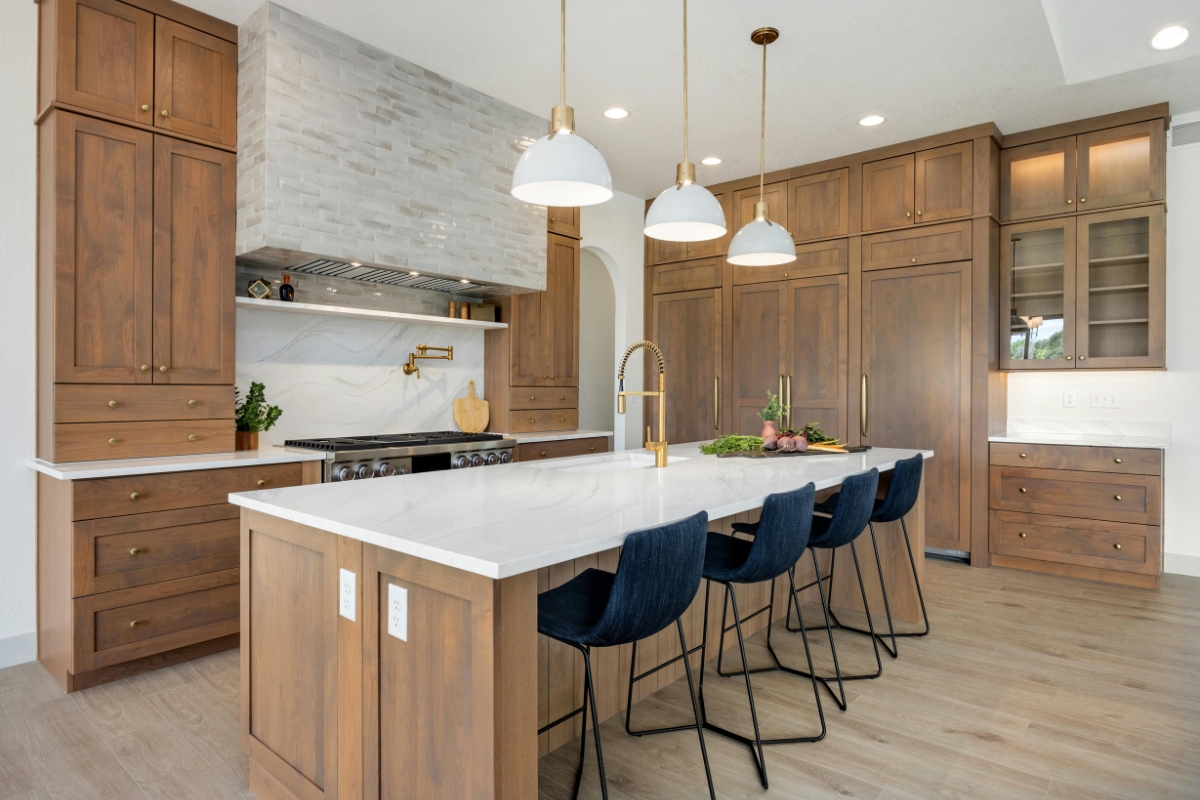
Smyrna’s hot, humid summers and mild winters create unique challenges for homeowners looking to keep indoor spaces comfortable without driving up energy costs. An eco-friendly remodel addresses these challenges by improving insulation in walls and ceilings, which helps maintain stable indoor temperatures year-round. Sealing gaps and upgrading attic insulation keep heat out in summer and trap warmth during cooler months, reducing the workload on heating and cooling systems and leading to noticeable savings on utility bills.
Replacing standard siding and roofing materials with options designed to reflect sunlight can further cut energy use. Light-colored roofing membranes and reflective exterior paints bounce solar radiation away from the home, preventing excess heat from transferring indoors. When paired with well-ventilated soffits and ridge vents, these measures create a passive cooling effect that lessens reliance on air conditioning and extends the lifespan of mechanical equipment.
Window upgrades play a critical role in energy performance as well. High-performance, double-pane windows with low-emissivity coatings block infrared and ultraviolet rays, keeping interiors cooler and protecting furnishings from sun damage. Properly installed frames and weatherstripping eliminate drafts, helping maintain a consistent temperature and improving comfort in living and cooking areas without overworking the HVAC system.
Water conservation is equally important in Smyrna, where summer rainfall patterns can be unpredictable. Installing low-flow faucets, showerheads, and toilets reduces water consumption without sacrificing performance. Rainwater harvesting systems capture runoff for outdoor irrigation, easing the demand on municipal supplies and supporting lush landscaping even during drier periods. Native or drought-tolerant plants in garden beds thrive on collected rainwater, reinforcing a sustainable cycle.
Local incentives make green remodeling more attainable. Georgia Power, Cobb EMC, and the City of Smyrna sometimes offer rebates or credits for energy-efficient appliance upgrades, insulation improvements, and solar installations. These programs offset upfront costs and deliver a faster return on investment. By planning projects around available incentives, homeowners can maximize long-term savings while contributing to broader environmental goals.
Beyond cost savings, eco-friendly homes in Smyrna enjoy stronger resale value. Buyers increasingly seek properties with ENERGY STAR® appliances, efficient HVAC systems, and water-saving fixtures. Homes that demonstrate lower operating expenses and healthier indoor environments stand out in the real estate market, attracting offers more quickly and often at higher prices. Improved indoor air quality—thanks to low-VOC paints and formaldehyde-free building materials—adds another layer of appeal for families sensitive to allergens or respiratory irritants.
Which Sustainable Materials Are Best for Eco-Friendly Kitchen Remodeling in Smyrna?
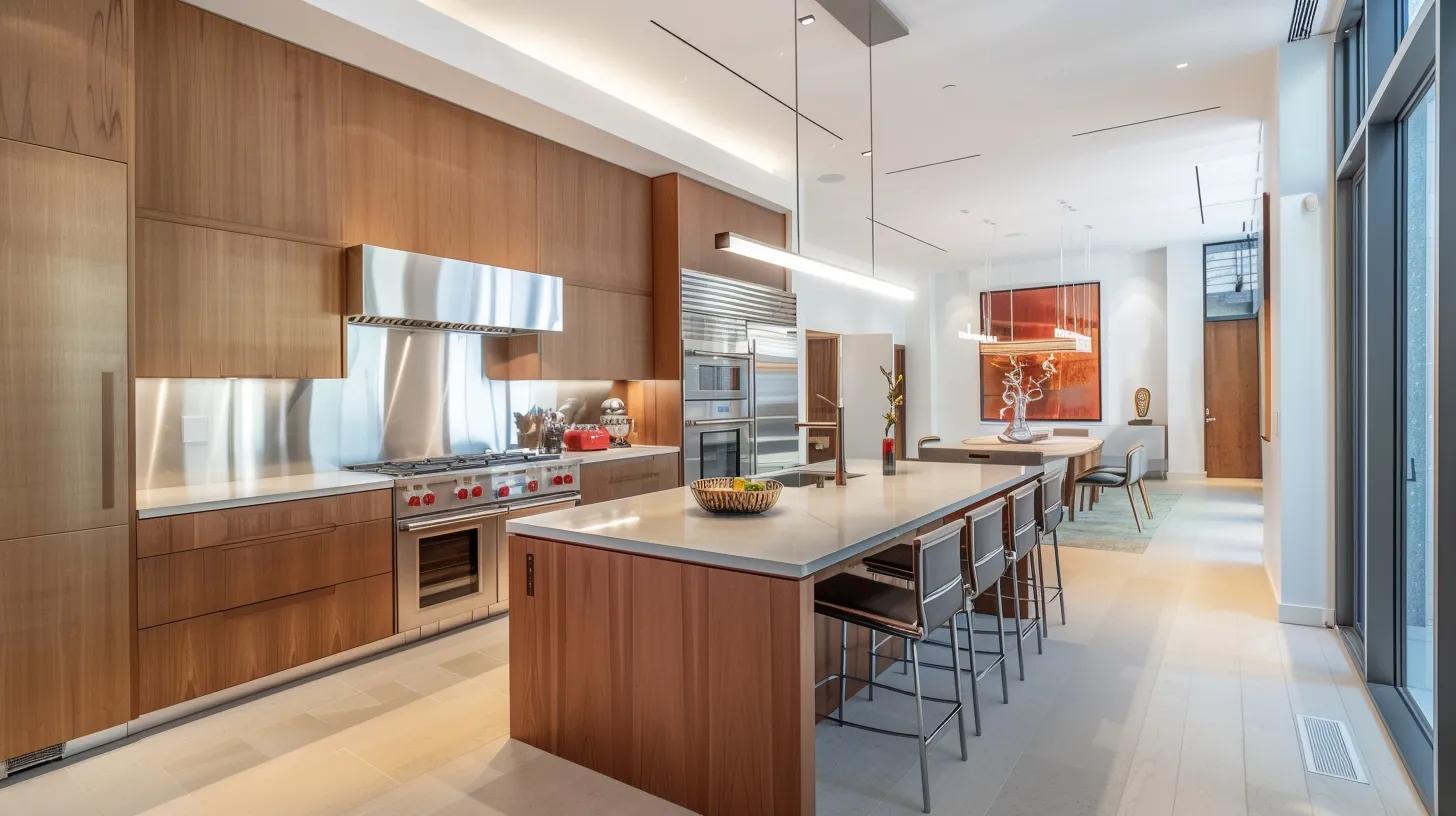
Choosing the right materials is the foundation of a truly sustainable kitchen remodel. In Smyrna’s warm, humid climate, materials that resist moisture, lower energy use, and improve air quality will deliver the greatest benefits over time. When you focus on renewable resources, recyclable options, and low-emission products, the result is a healthier home and a reduced environmental footprint.
Cabinetry crafted from rapidly renewable wood species offers both beauty and resilience. Bamboo and cork grow back far more quickly than traditional hardwoods, making them excellent candidates for cabinet doors and shelving. Look for products certified by the Forest Stewardship Council (FSC), which guarantees that the wood was harvested in a responsible manner. Engineered wood—such as plywood or medium-density fiberboard—can also be a sustainable choice when it incorporates recycled fibers and carries low formaldehyde emissions.
Countertops present an opportunity to turn recycled materials into striking design features. Surfaces made from crushed recycled glass set in a cement or resin base capture light and color while diverting waste from landfills. Paper composite counters—formed from recycled paper bonded with resin—offer warmth underfoot and impressive durability. If you prefer a natural stone look, consider reclaimed or salvaged stone slabs. These have already undergone extraction and fabrication, so choosing them spares new quarrying and transportation impacts.
Flooring should balance durability with eco-credentials. Reclaimed hardwood planks save mature timber from disposal and bring a unique, time-worn character to your kitchen. Cork flooring, harvested from the bark of cork oak trees without harming the tree itself, provides natural cushioning underfoot and excellent sound absorption. For moisture-resistant options, linoleum made from linseed oil, cork dust, and wood flour offers a biodegradable alternative to vinyl, while ceramic or porcelain tiles remain a long-lasting choice if manufactured locally to minimize shipping distances.
Finishes and adhesives play an outsize role in indoor air quality. Traditional paints and varnishes can emit volatile organic compounds (VOCs) that linger long after installation. By selecting low-VOC or zero-VOC paints, stains, and sealants, you reduce harmful off-gassing and create a safer atmosphere for cooking and dining. Similarly, choose adhesives and caulk formulations that meet GreenGuard or similar indoor-air-quality standards to ensure that every joint and seam contributes to a healthy environment.
Appliances and fixtures round out the sustainable design. Energy-efficient dishwashers, refrigerators, and induction cooktops use significantly less electricity than older models, lowering utility bills and carbon emissions. Water-saving faucets and dishwashers with Soil Sensor technology adjust water use to the actual load, reducing waste without sacrificing performance. Don’t forget LED lighting: recessed fixtures, under-cabinet lights, and pendant lamps that use LED bulbs consume a fraction of the power of incandescent or halogen bulbs and last many times longer.
How Does the Eco-Friendly Kitchen Remodeling Process Work in Smyrna?
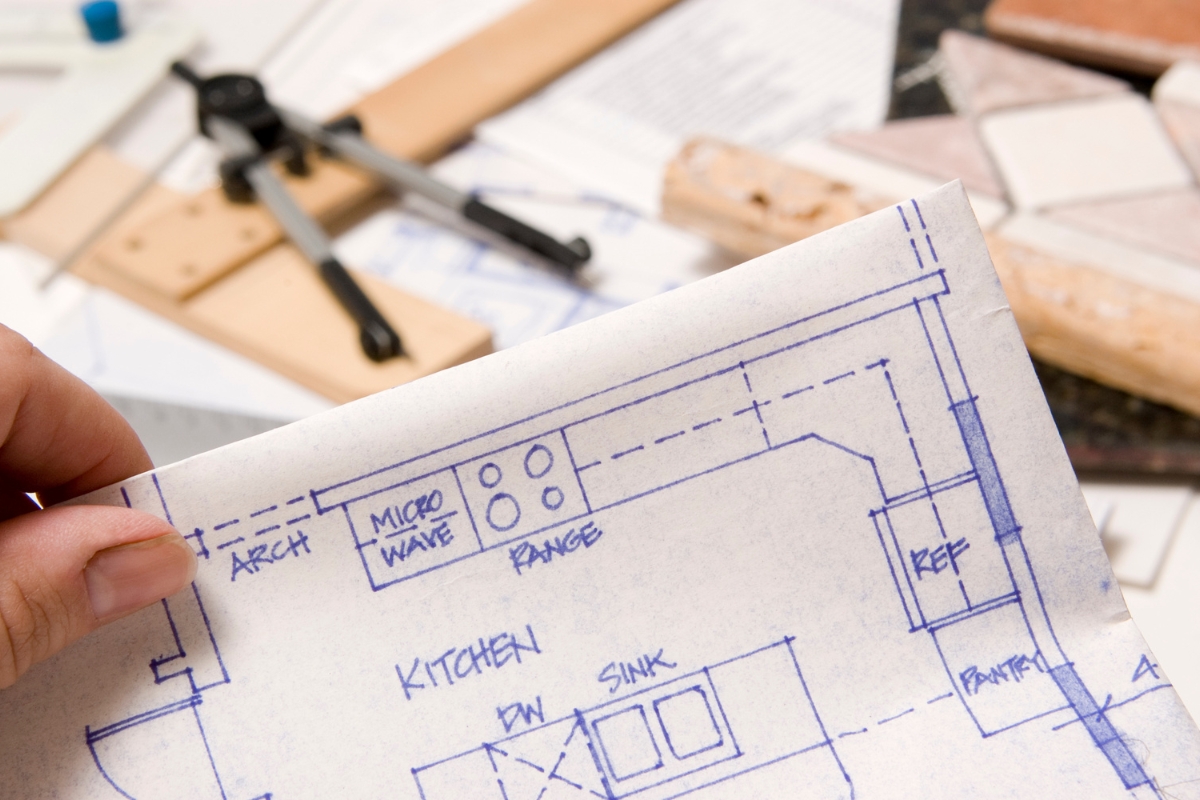
An eco-friendly kitchen remodel in Smyrna starts with setting clear goals for energy reduction, water conservation, and waste minimization. Homeowners meet with designers to survey the existing layout and identify areas where upgrades will make the biggest difference. Early steps include testing insulation levels, evaluating window performance, and mapping out plumbing and electrical systems. This preparation ensures the project targets high-impact improvements that suit Smyrna’s hot, humid summers and mild winters.
Design and Planning
During design, every choice aims to balance functionality with sustainability. Professionals create detailed floor plans and 3D renderings that highlight natural light, cross-ventilation, and efficient work zones. They recommend materials such as rapidly renewable bamboo or FSC-certified wood for cabinets, and recycled glass or paper-composite for countertops. Water-saving faucets and low-flow fixtures are specified alongside rainwater capture systems for garden irrigation. Selecting low-VOC paints and adhesives at this stage ensures healthier indoor air. Budget, timing, and local building codes are all woven into the final plan before construction begins.
Sustainable Demolition and Construction
Contractors approach demolition with care, removing only what is necessary and setting aside reusable items like cabinet boxes, fixtures, and metal hardware. This practice cuts down on debris and diverts salvageable materials from landfills. During construction, crews use dust-control techniques and low-emission tools to protect air quality. Materials arrive on a just-in-time schedule, reducing on-site storage and the risk of damage or excess. Waste is sorted on site—wood, metal, drywall, and plastics each go to the appropriate recycling stream. These measures keep waste volumes low and make recycling more efficient.
Installing Eco-Friendly Materials
Precision in installation preserves the performance of sustainable materials. Wood flooring and bamboo panels are stored on site to adapt to indoor humidity, preventing warping later on. Countertops crafted from recycled glass or engineered stone are carefully measured and cut to minimize offcuts. All seams and edges receive high-quality, water-based sealants that resist moisture without off-gassing harmful chemicals. Energy-efficient appliances—like induction cooktops and ENERGY STAR® refrigerators—are wired into smart home systems that optimize usage. LED lighting fixtures are installed under cabinets and above work areas to reduce electricity demand.
Project Management for Efficiency
A dedicated project manager keeps the remodel on schedule and on budget by coordinating deliveries, tradespeople, and inspections. Progress reviews track key metrics such as material waste diversion rates and projected energy savings. Regular check-ins with homeowners ensure any adjustments are made quickly. By leveraging local incentive programs—rebates for insulation upgrades or tax credits for solar installations—the team helps offset upfront costs. Clear communication and detailed timelines prevent delays and ensure each phase meets environmental standards.
What Are the Costs and Budgeting Tips for Eco-Friendly Kitchen Remodeling in Smyrna?

Although eco-friendly kitchen remodeling usually requires a higher initial investment, the long-term benefits such as energy savings, increased home value, and improved indoor air quality justify the cost. Homeowners should plan for both upfront expenses and long-term savings when budgeting. Detailed cost analyses include material, labor, appliance upgrades, and potential local incentives like rebates or tax credits. Obtaining multiple quotes from specialized contractors ensures competitive pricing and a transparent breakdown of sustainable upgrades.
How Much Does an Eco-Friendly Kitchen Remodel Typically Cost?
The typical cost for an eco-friendly kitchen remodel in Smyrna ranges from approximately $35,000 to $70,000, depending on the project scope, material choices, and customization level. Variations arise from the size of the kitchen, the incorporation of low-VOC cabinetry and recycled materials, and regional labor rates. While initial expenses may be higher than conventional remodels, long-term savings in energy use and maintenance—as well as increased property value—can offset these costs over time.
What Are Cost-Saving Strategies Without Sacrificing Sustainability?
To manage expenses without compromising sustainability, homeowners can prioritize high-impact areas such as energy-efficient appliances and eco-friendly countertops. Opting for locally sourced and durable materials can also reduce long-term maintenance costs. Negotiating bulk pricing with specialized contractors or phasing the remodel over time allows for reinvestment of energy savings into further upgrades. Additionally, exploring government incentives and utility rebates can lower initial outlays, while strict project management helps minimize waste and avoid costly redesigns.
How Do Local Smyrna Suppliers Affect Remodeling Costs?
Working with local suppliers in Smyrna can significantly cut remodeling costs by reducing delivery times and transportation emissions, as well as providing competitive pricing. Regional suppliers are familiar with local environmental standards and climate conditions, ensuring that materials meet specific needs. Their reliable logistics help prevent unexpected delays and cost overruns, further balancing high-quality sustainable materials with a budget-friendly remodel.
Are There Incentives or Rebates for Sustainable Kitchen Upgrades?
Homeowners in Smyrna may benefit from various local, state, or federal incentives for sustainable kitchen upgrades. These programs often include tax credits, utility rebates, or low-interest financing available for energy-efficient appliances, insulation improvements, low-VOC finishes, and water-saving fixtures. Contractors experienced in eco-friendly remodeling can help navigate these programs, which reduce overall costs and accelerate the return on investment while promoting greener building practices.
How to Find and Choose a Qualified Eco-Friendly Kitchen Remodeler in Smyrna
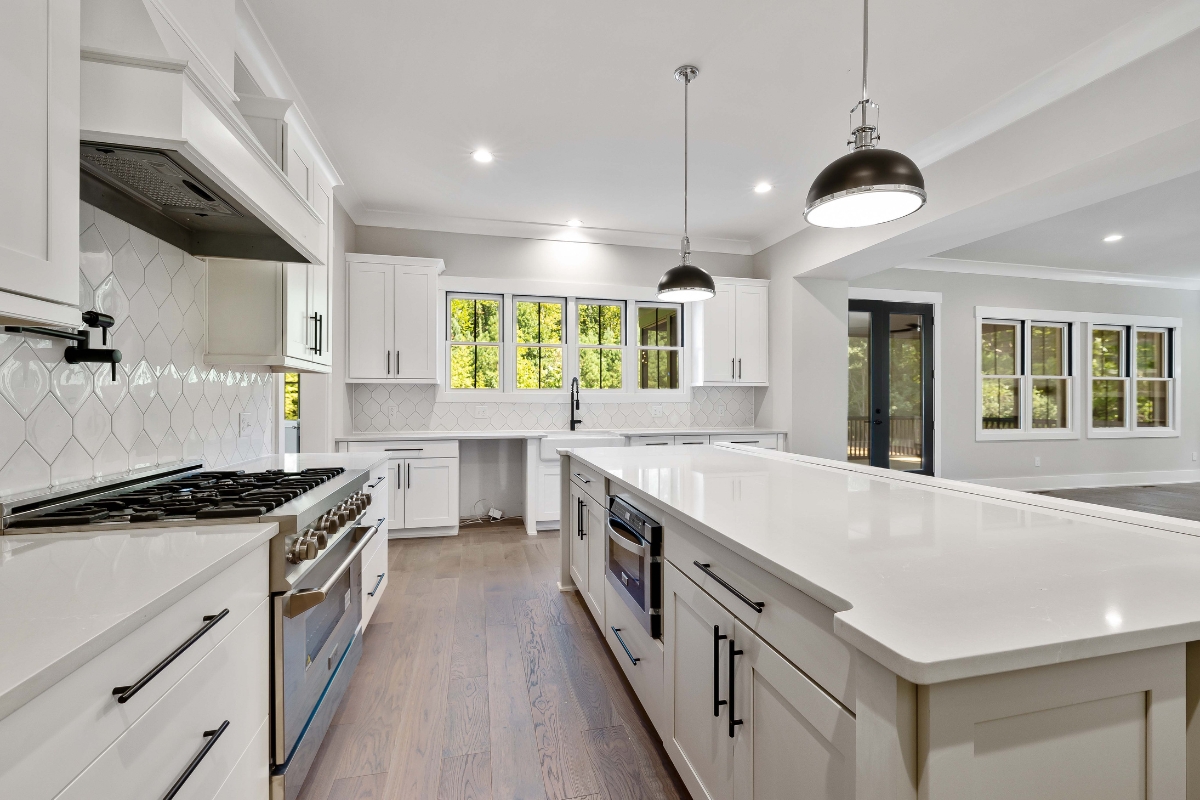
Choosing the right professional is key to a successful sustainable kitchen upgrade. Look for contractors who focus on green building practices and can explain the steps they take to minimize environmental impact. A reliable remodeler will discuss energy and water savings, material sourcing, and indoor air quality from the very first meeting.
Credentials and Certifications That Matter
In Smyrna, remodelers should hold recognized green building credentials. LEED accreditation and Green Building certifications indicate training in energy efficiency, waste reduction, and responsible construction methods. ENERGY STAR Partner status shows a commitment to installing high-performance appliances and systems. Membership in local green building councils or trade associations adds further credibility. These qualifications demonstrate the contractor’s knowledge of eco-friendly standards as well as familiarity with Georgia’s environmental regulations.
Assessing Experience with Sustainable Kitchen Projects
Before you hire anyone, review the contractor’s past projects to see how they’ve managed eco-friendly remodels. A strong portfolio will feature kitchens that incorporate recycled or renewable materials, energy-efficient lighting, and water-saving fixtures. Ask for case studies or photo documentation that detail material choices and the results achieved, such as reduced utility bills or improved indoor air quality. If possible, visit a completed project in person or take a virtual tour. Seeing a remodeler’s workmanship up close will help you judge attention to detail, material fit and finish, and overall design quality.
Questions to Ask During Consultations
During your initial conversations, pose open-ended questions to gauge the remodeler’s approach. For example, ask how they source certified sustainable materials and what strategies they use to reduce on-site waste. Have them describe a recent green kitchen project: which eco-friendly products they selected, how they handled existing appliance removal, and the methods they used to protect indoor air quality during construction. Inquire about their process for separating and recycling demolition debris, and ask how they stay current with local building codes and incentive programs. Their answers will reveal whether sustainability is a true core value or simply a marketing angle.
Finding Local Reviews and Recommendations
Online review platforms like Google Reviews and Yelp can provide firsthand accounts of a remodeler’s reliability, communication style, and quality of work. Look for comments that highlight green practices, such as careful material handling or effective dust management. Community forums or neighborhood social media groups may offer additional insights, especially when members share their own experiences with eco-friendly remodels. You can also reach out to regional green building organizations for lists of vetted professionals. Combining online reviews with word-of-mouth referrals gives you a well-rounded view of each candidate’s strengths and areas for improvement.
What Are the Design Trends and Aesthetic Options for Sustainable Kitchens in 2025?
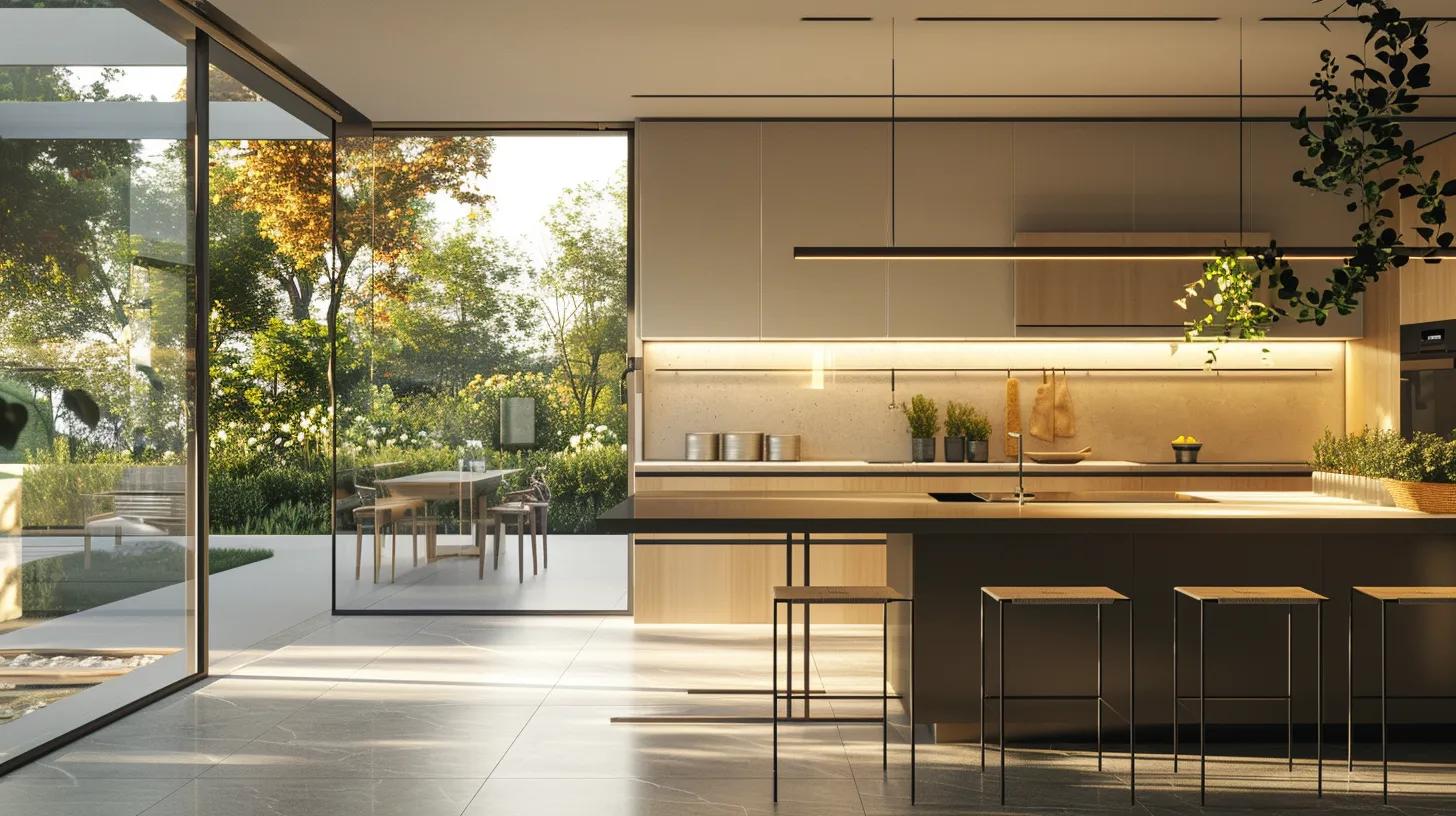
Sustainable kitchens in 2025 blend advanced eco-friendly technologies with innovative design trends that emphasize natural light, open space, and minimalism. Modern sustainable designs draw inspiration from biophilic trends, incorporating organic textures and energy-efficient solutions that promote wellness, functionality, and a connection to nature. Homeowners increasingly desire kitchens that meld sleek, contemporary aesthetics with environmental responsibility.
How to Incorporate Sustainable Layouts and Space Planning?
Sustainable layouts optimize space by using open floor plans, strategic window placements, and modular kitchen islands that integrate energy-efficient appliances. These designs maximize natural light and ventilation, reducing reliance on artificial lighting and mechanical cooling. Careful space planning that incorporates multifunctional zones and smart storage solutions—crafted from eco-friendly materials—ensures practicality and a reduced environmental footprint.
What Lighting and Ventilation Solutions Enhance Energy Efficiency?
Modern sustainable kitchens utilize LED lighting with smart controls to adjust brightness based on ambient light levels, while energy recovery ventilators (ERVs) and strategically placed operable windows help pre-condition incoming air. These lighting and ventilation solutions lower energy bills and enhance indoor air quality by reducing unnecessary energy use and maintaining comfortable temperatures without overdependence on mechanical systems.
Which Styles Blend Sustainability With Modern or Traditional Aesthetics?
Contemporary sustainable kitchens offer a variety of styles. Modern designs typically feature minimalist cabinetry with high-gloss finishes and natural wood accents, while traditional styles incorporate reclaimed wood, vintage fixtures, and natural stone. Hybrid approaches combine energy-efficient appliances with classic design elements, appealing to buyers who appreciate both innovative technology and timeless aesthetics.
How Does Smart Home Technology Integrate With Eco-Friendly Kitchens?
Smart home technology is increasingly integrated into eco-friendly kitchens. Features such as programmable thermostats, occupancy sensors for lighting, and remotely controlled appliances work together to optimize energy use. These interconnected systems allow homeowners to adjust settings in real time, further reducing energy consumption and enhancing the overall efficiency and convenience of the kitchen environment.
Final Thoughts
Ready to bring sustainable style and functionality to your Smyrna kitchen? With Kitchen and Bath by Zeus, you’ll enjoy eco-friendly materials, energy-conscious appliances, and expert craftsmanship designed to stand the test of time. Our team is dedicated to helping property owners create beautiful kitchens that save you money and reduce your environmental footprint. Give us a call at 404-602-2668 or fill out our online form today to request your free consultation—and take the first step toward your dream, sustainable kitchen remodel.


